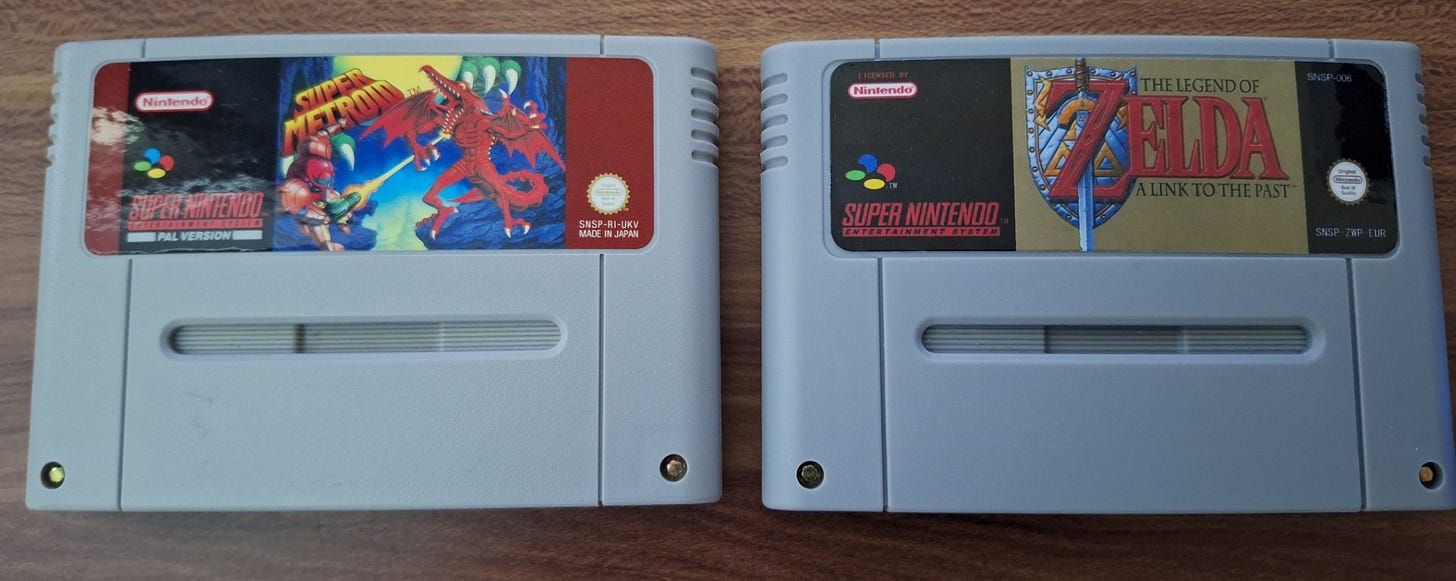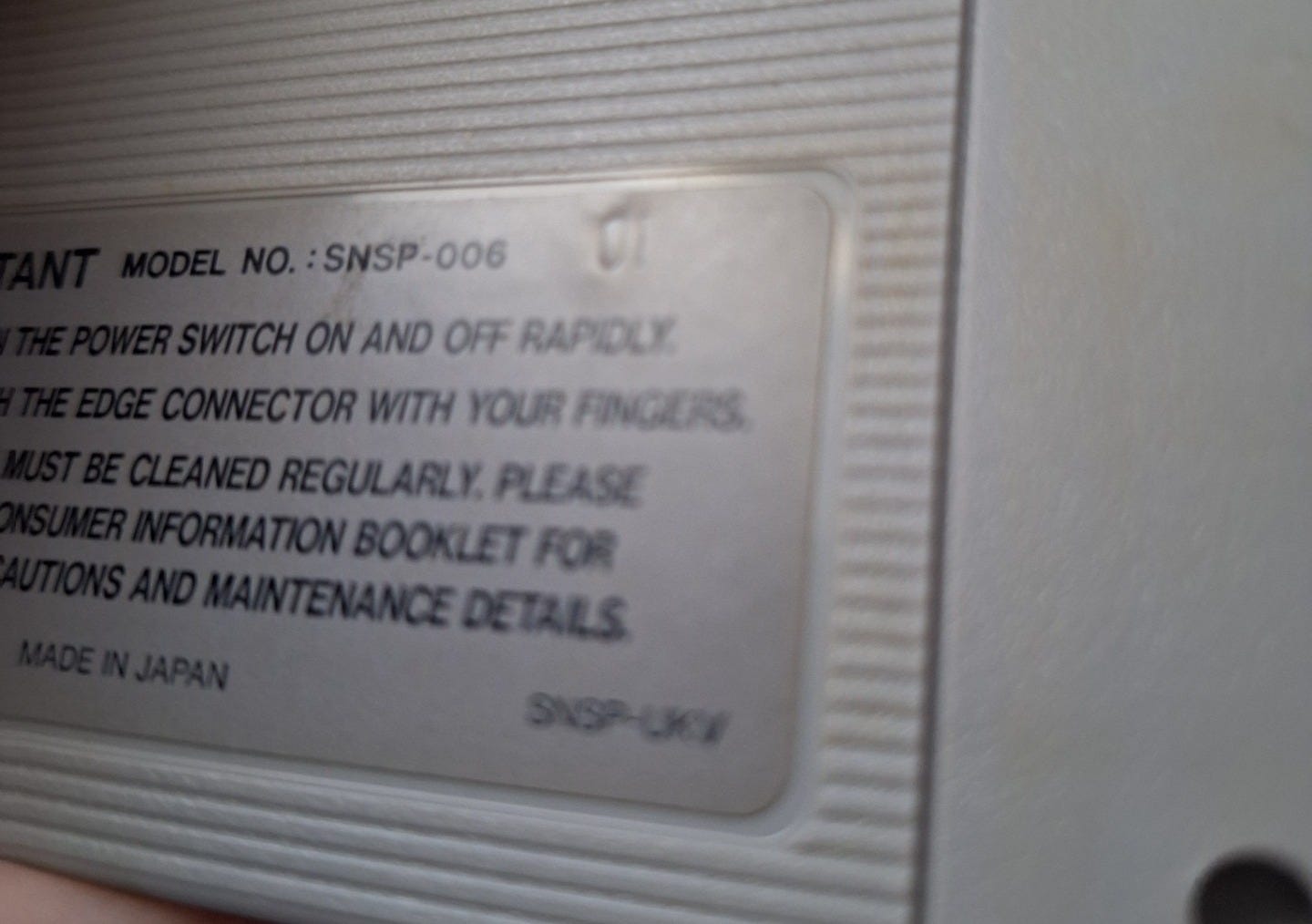It has never been easier and more in-fashion to play old video games but the same can’t be said for the means of doing so.
Hardware like the Analogue Pocket, Retro Tink, aftermarket HDMI compatible consoles, reproduction cartridges and efforts from gaming’s Big 3 console manufacturers have made playing old games more accessible than ever… but there is a bubbling malcontent below the surface: a debate with no clear answer.
What actually counts as retro gaming?
Over the years and through the safekeeping of some childhood treasures, I’ve built up a pretty large retro collection including 3 CRT’s and every Nintendo you can think of (that isn’t the Virtual Boy.) Today, I’m going to give you my take on some of the debates around retro gaming at the moment and how I think things will look a few years down the line.
Sit back and enjoy.
How Old Is Retro?
A frequent debate is simply what counts as a retro console and library. Is the Xbox 360 a retro console now? It’s 20 years old but it doesn’t feel that old yet and what about the Dreamcast? That could connect to the internet and has PS2-comparable graphics but it came out in 1998. The PS2 is 25 years old now but would you say a 25 year old isn’t young?
Let’s get some inspiration from online before I give my answer.
Reddit’s r/retrogaming considers the 5th generation of consoles and the Dreamcast to be the ‘newest’ retro consoles; generally speaking, everything before the year 2000 is retro.
Skynet, as per-usual, gives only the most vague and unhelpful answer possible, narrowing retro down to ‘usually after the Industrial Revolution.’ But how recent is the ‘recent past?’ I’m going to go with a definition I’ve heard thrown around a bit and alluded to in one of Skynet’s later paragraphs: 30 years. Everything before 1995 is retro.
Wikipedia has no definitive answers and instead gives us a roundup of the most common definitions and arguments for them, much of this is what I will be basing my answer from.
We’ve seen a few different points of view, so now I’ll tell you what I think.
The three biggest changes in how we consume video games, in my opinion, were the integration of internet connectivity with home consoles, the launch of Steam and the adoption of LCD displays with HDMI and 16:9 aspect ratios; all three of these things occurred, although gradually, from around 2003-2008. This process spanned the death of the 6th generation consoles and the birth of the 7th.
These changes aren’t minor like a different disc format or the introduction of hard drives, they create a fundamental inability to travel backwards without specialised hardware, at least for console players; unless you have a CRT TV or an upscaler, you cannot play anything older than the Xbox 360 and PS3 on a modern TV so my opinion is that anything prior to about 2005 is retro; functionally, anything before these 2 consoles. The Wii is an annoying outlier to this answer as it had no HDMI compatibility, however, it isn’t retro because the Wii has featureless like wireless internet access and is a hell of a lot easier to upscale to a satisfactory level.
Are Third Party Consoles Retro?
This is the Analogue Pocket. It features a modern, sleek design, a much better screen than any model of the Gameboy ever produced and is compatible with a variety of different systems; to put the cherry on top of this proverbial cake, it doesn’t emulate games, it runs them natively as if it were a ‘real’ console.
But is it retro?
There are many ways to categorise retro gamers: some are Nintendo enthusiasts, some prefer Sony, an increasing number of gamers even collect for Xbox and many are collectors first and gamers second, treating these items as pieces of history or even a monetary investment. But among the gamers specifically, there is a key divide: authentic play vs optimal play. Old game consoles and cartridges were consistently hamstrung by memory issues, low storage capacity, video output etc. and in the modern day, even a cheap Chinese handheld can usually run a game better than the real hardware… but that in itself makes the whole experience inauthentic.
I’m of the opinion, as unpopular as it is, that playing on emulators or third party consoles isn’t really retro gaming.
Without the original console, the original controller and a CRT TV, you aren’t getting the intended experience at all, especially not when running emulators on something like a Steam Deck or PC. There is an argument to be made that these enhanced versions of older games are ‘the way the developers always intended it’ however, that’s irrelevant to me; throwing aside the death of the author, I’m much less interested in playing the best possible version of a game and much more invested in reliving history for myself.
Reproduction Cartridges: An Inevitable ‘Evil?’
Reproduction cartridges (often just called ‘repros’) have picked up quite a negative reputation over the years.
Sometimes cheaply made, disconcertingly heavy and disingenuously passed off as the real thing on Ebay, these cartridges at their worst wear down the connecting pins on your console, are more prone to failure and are the absolute bane of collectors since those who aren’t in the know generally have no idea how to tell the difference.
Before I give my answer, I’m going to give you a little tutorial on how to do this; repro cartridges fool people every day.
One of these cartridges is a repro and the other is an original, if you’d like, take a guess now as to which one is the faker.
Right, the first thing to check on your cartridge is that Nintendo Seal of Approval; it was basically just a sticker to prove that you’d paid to get the license but it also helps determine authenticity. If you hold it up to the light, it should shine gold… like it does on my copy of Super Metroid here.
Another obvious sign of a repro cart is to check the back label, first for any obvious differences…
And for the cartridge’s serial number indented into the label, which every officially produced, original cartridge has from the SNES to the Gameboy Advance. This is the most fool-proof method.
There are some other minor differences like one being a touch heavier and the colour of the plastic and the way the front sticker sits on the game but it should be obvious by now: my copy of A Link to the Past is the imposter! But I don’t hate reproduction cartridges, in fact, I think they’re the future.
That ‘fake’ A Link to the Past of mine came in a nice box, was about a quarter of the price of the real cartridge and plays completely fine; it was the first time I got to experience that classic on original hardware and although I plan to get myself a real copy someday, that ‘fake’ cartridge holds too much sentimental value for me to just bin it now. Retro gaming is only getting more popular and with those bloody collectors (the types who buy 3 of every game and are gluttonous enough to have 5 of every console) making prices shoot right up, more and more people are being priced out of original games. These games are from a time where the medium was still thought to be on the same level as toys by the average joe and consoles breaking even the 80 millions ales mark were unheard of, so we simply didn’t have games manufactured on the scale that they are today and as the finite reserves of original copies are either bought up or succumb to time, I think high-quality repro cartridges is the way forward.
The idea isn’t the issue, it’s the execution thus far.
This has just been a brief smattering of topics I wanted to cover but didn’t warrant posts all by themselves. I think my overarching opinion is that retro gaming is with original hardware but playing using emulators and third party consoles is just… playing old games. I’m sorry to be the gatekeeper on this one but I can’t accept that playing Super Mario 64 upscaled to a huge flat screen TV with a third party controller and wireless adapter is the same fundamental experience as playing it on a CRT constricted by the cable and that hellish gamepad.
On a more inclusive note, I really hope opinions on reproduction cartridges turn around. I also prefer the real thing but there will come a day where the genuine article is too expensive and scarce to afford and when that day comes, we need great options available.
If you enjoyed today’s post, please like and subscribe and consider donating to Scanlines’ Journal from as little as £1. I would love to see you down in the comments too.
There are several games on my ‘to review’ list at the moment which might cause a slight delay in my posting, if this happens then don’t worry, I’m going nowhere!











Thanks for this! What a nice introduction and food for thought on the topic I know nothing about. Retro gaming isn't on my radar but I'd love to read more essays from you on it.
Wow, this really gave me some food for thought! I agree with your definition of what should be considered “retro” in gaming, but it also got me thinking about why we start calling something retro even when it still feels relatively new.
I think what often drives that shift is the influence of whichever generation holds the most cultural and economic weight at the time. For example, we’re seeing a resurgence of pocket consoles like the Analogue Pocket and repro cartridges because Gen Y grew up with the Game Boy and 16-bit systems. That nostalgia now fuels design and demand.
It’s likely that Gen Z will revive early 2000s aesthetics next... and maybe they already are. The upcoming Anbernic RG Slide, for instance, totally channels that old-school flip phone vibe that also is reminiscent from the PSP GO.
Anyway, that's what I enjoy about posts like this. You make me think about new perspectives altogether. Good stuff!